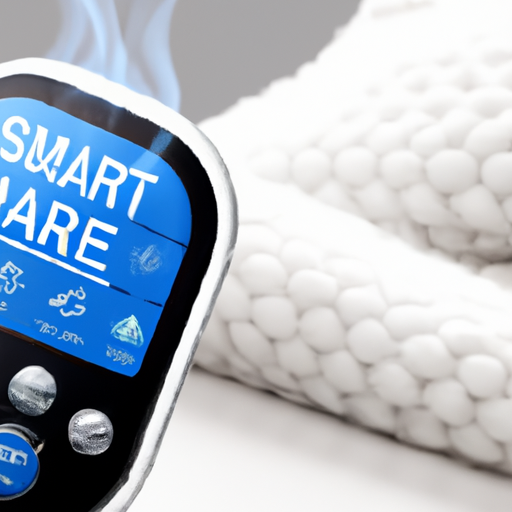Imagine waking up to a home that knows your every need, making your everyday tasks easier and more efficient. With the rise of technology, the concept of a smart home has become a reality, transforming the way we live. From voice-activated devices to automating household appliances, this article explores the fascinating world of smart homes and how they are revolutionizing the way we interact with our living spaces. Discover how the integration of technology and convenience is reshaping our homes into intuitive and intelligent havens.
What is a Smart Home?
Imagine living in a home that anticipates your needs, responds to your commands, and creates an environment tailored to your preferences. This is the concept of a smart home. A smart home is a residence equipped with devices and systems that can be controlled and automated to enhance your everyday life. It utilizes cutting-edge technology, such as the Internet of Things (IoT), to connect and integrate various appliances and systems, creating a seamless and intelligent living space.
Benefits of a Smart Home
Investing in a smart home brings numerous benefits that can greatly improve your quality of life. Let’s explore some of the key advantages you can enjoy by turning your residence into a smart home.
1. Convenience
One of the most significant advantages of a smart home is the convenience it offers. With the ability to control various devices remotely, a smart home allows you to automate routine tasks and simplify your daily activities. For instance, imagine being able to turn on the lights, adjust the thermostat, and start your coffee maker all with a simple voice command or the touch of a button on your smartphone. This level of convenience can save you valuable time and effort, giving you more freedom to focus on the things that truly matter.
2. Energy Efficiency
A smart home is also designed to be energy-efficient, which not only benefits the environment but also saves you money on utility bills. Smart appliances and systems can intelligently monitor and optimize energy usage, minimizing wastage and reducing your carbon footprint. For example, a smart thermostat can learn your preferred temperature settings and adjust them accordingly, ensuring efficient heating and cooling without unnecessary energy consumption. By making your home more energy-efficient, you contribute to a greener future while enjoying cost savings in the long run.
3. Security
Security is a top priority for any homeowner, and a smart home offers advanced security features to help protect your property and loved ones. Smart security systems can include surveillance cameras, motion sensors, and smart locks, all of which can be remotely monitored and controlled. Whether you’re at work, on vacation, or simply in another room, you can keep an eye on your home and receive instant alerts in case of any suspicious activity. This added layer of security provides peace of mind, knowing that your home is being effectively monitored and protected.
4. Cost Savings
In addition to energy savings, a smart home can lead to significant cost savings in various other areas. By automating and optimizing household functions, you can reduce unnecessary expenses related to water, electricity, and gas consumption. For example, a smart irrigation system can monitor soil moisture levels and weather forecasts to determine the optimal amount of water needed for your garden, eliminating water waste and reducing your monthly water bill. Over time, these cost savings can add up and contribute to a more efficient and budget-friendly lifestyle.
5. Remote Monitoring and Control
The ability to remotely monitor and control your home is a game-changer, especially when you’re away. Whether you’re at work, traveling, or simply not in the immediate vicinity, a smart home allows you to stay connected and in control. From checking security camera feeds to adjusting temperature settings, you can manage and interact with your home from anywhere in the world using your smartphone or other connected devices. This level of convenience and peace of mind ensures that you’re never too far away from the comfort and security of your home.
Components of a Smart Home
To truly understand the capabilities of a smart home, it’s essential to explore its key components. These components are the backbone of a smart home ecosystem, working together to create a seamless and interconnected living space.
1. Smart Appliances
Smart appliances are the heart of a smart home. These devices are equipped with sensors, connectivity features, and built-in intelligence to provide enhanced functionality and automation. Examples of smart appliances include smart refrigerators, ovens, washing machines, and even robotic vacuum cleaners. These appliances can communicate with each other and be controlled remotely, enabling you to manage your household chores more efficiently and effortlessly.
Future of Smart Homes
As technology continues to advance at an exponential rate, the future of smart homes looks promising. We can expect even more innovative and convenient features integrated into our living spaces. For instance, artificial intelligence (AI) will play a more significant role in smart homes, enabling personalized experiences and predictive automation. Additionally, the integration of natural language processing (NLP) and voice assistants will enhance the user experience, allowing for more intuitive and natural interactions with smart home devices.
In conclusion, turning your home into a smart home offers a wide range of benefits, including convenience, energy efficiency, enhanced security, cost savings, and remote monitoring and control. By embracing the latest technology and integrating smart appliances and systems, you can transform your residence into a truly intelligent and personalized living space. As the future of smart homes continues to evolve, we can look forward to even more exciting innovations that will further revolutionize our everyday lives. So why wait? Embrace the possibilities and unlock the potential of a smart home today.



